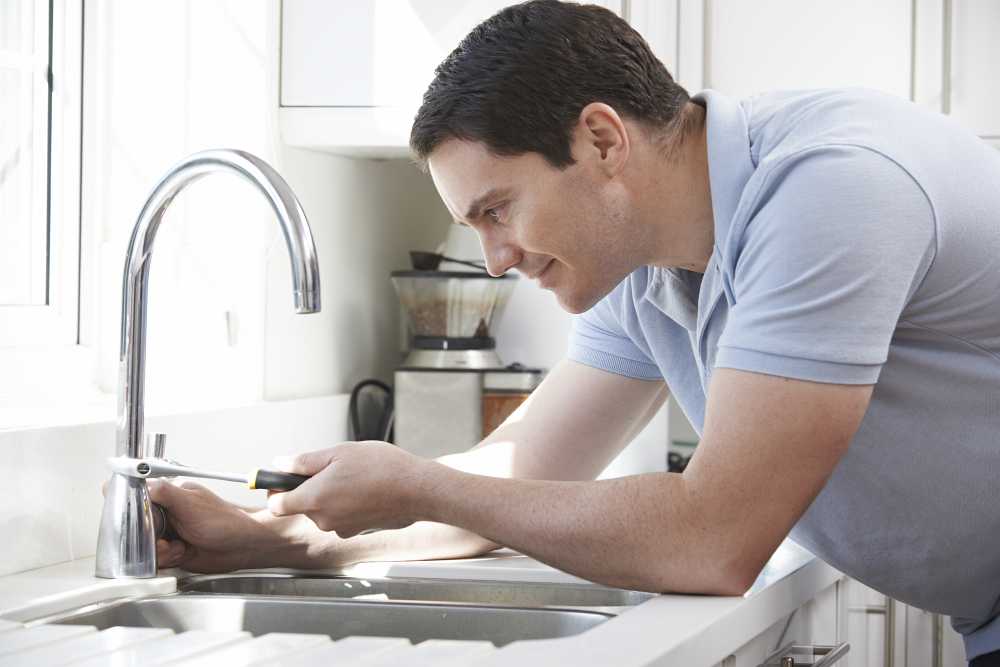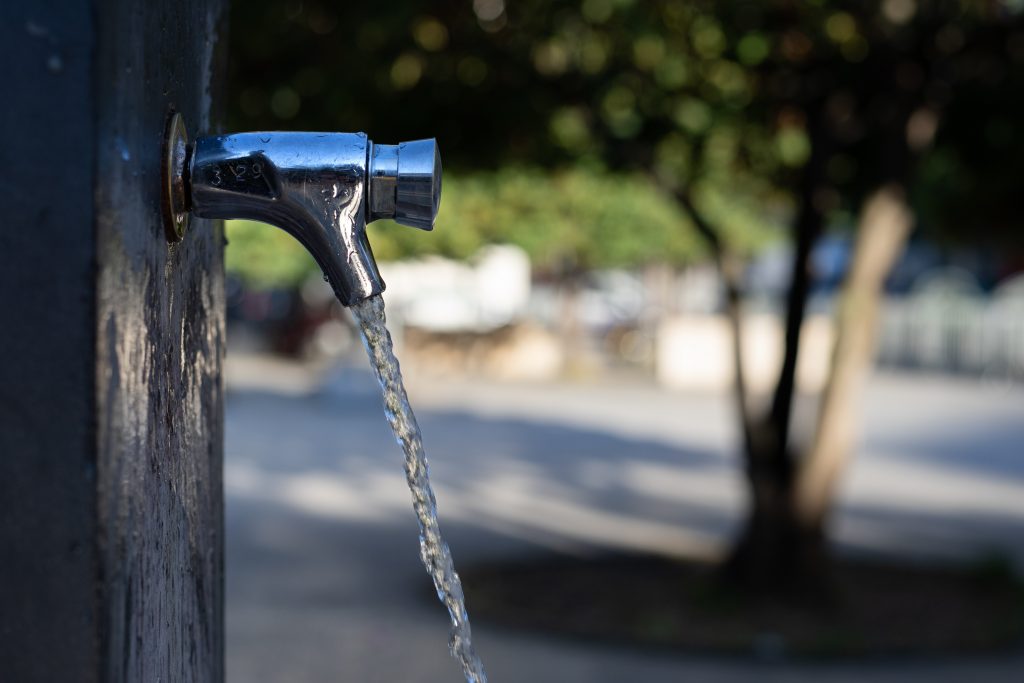The Influence of Dripping Faucets
The Influence of Dripping Faucets
Blog Article
Each person has got his or her own rationale when it comes to Health Risks Posed by Leaking Faucets.

Introduction
A leaky faucet could feel like a small annoyance, yet its effects expand far beyond the occasional drip. Understanding the impacts of a leaking faucet is crucial for both home owners and the environment. In this article, we'll explore the various effects of this common household concern and why addressing it quickly is necessary.
Reasons For Leaky Faucets
Leaky taps can arise from a range of variables, consisting of deterioration, high water stress, and corrosion. Over time, the continuous use faucets can bring about worn-out seals and gaskets, triggering leakages to develop. In addition, excessive water pressure can put pressure on plumbing fixtures, causing leaks. Deterioration and rust can additionally deteriorate tap components, making them vulnerable to leak.
Water Waste
Among one of the most substantial consequences of a leaking faucet is water wastefulness. Even a tiny drip can add up to gallons of drainage with time. This not just increases water expenses but also adds to water deficiency and ecological destruction. Addressing leaking faucets without delay is essential for preserving this precious resource and lessening its effect on the earth.
Financial Influence
Along with drainage, leaky faucets can also have a significant financial impact. Enhanced water expenses are a direct effect of water wastefulness, setting you back homeowners hundreds of bucks yearly. In addition, the price of fixing water damages triggered by leaks can be significant, especially if left neglected for an extensive period.
Ecological Influence
The environmental impact of dripping faucets extends beyond water wastage. By saving water, home owners can add to broader initiatives to mitigate water shortage and safeguard natural communities. Lasting choices such as rainwater harvesting and water-efficient components can even more reduce the environmental impact of home water usage.
Technical Solutions
Advancements in technology have led to the growth of smart faucets and water-saving gadgets that aid minimize water waste. Smart taps make use of sensing units to find motion and change water circulation accordingly, decreasing waste without compromising ease. Water-saving devices such as aerators and low-flow showerheads are also efficient in saving water without endangering efficiency.
Worldwide Viewpoints
While leaky faucets may appear like a local concern, they add to broader global challenges such as water scarcity and climate modification. In areas already dealing with water tension, every decline counts, making leakage prevention and repair crucial. By embracing water-saving methods and investing in lasting technologies, property owners can play their component in addressing these pushing worldwide problems.
Regulatory Actions
Government regulations play an essential role in reducing the influence of leaky taps and promoting water conservation. From developing codes that require water-efficient fixtures to water-saving motivations and rebates, policymakers have a series of tools at their disposal. By applying and implementing these regulations, federal governments can make certain that house owners focus on water conservation in their day-to-days live.
Area Effect
Resolving leaking faucets needs cumulative initiatives at the area level. By raising understanding regarding the value of water preservation and offering resources for leakage discovery and repair, local authorities can equip home owners to do something about it. Efforts such as water-saving refund programs and leak discovery campaigns can incentivize habits modification and promote accountable water use.
Case Researches
Real-life instances of the influence of leaky taps highlight the relevance of proactive upkeep and prompt repair services. From water damages to skyrocketing water bills, the consequences of neglecting leaks can be extreme. By sharing these case studies, homeowners can much better recognize the importance of resolving leaking taps immediately.
Educational Campaigns
Educational campaigns play an essential duty in increasing understanding regarding the results of leaking taps and promoting water conservation methods. Through workshops, workshops, and on-line resources, house owners can learn exactly how to spot and repair leaks themselves. By empowering individuals with expertise and devices, instructional campaigns can foster a culture of responsible water use within communities.
Wellness Concerns
Leaky faucets can create conducive environments for mold and mold growth, presenting health risks to owners. The presence of mold and mildew can intensify respiratory system problems and allergic reactions, particularly in vulnerable people. In addition, water damage resulting from leaks can jeopardize the architectural honesty of buildings and lead to costly repair services.
Do it yourself vs. Expert Repair work
When confronted with a dripping faucet, homeowners typically discuss whether to attempt repair work themselves or work with a specialist plumber. While DIY repair services can save cash, they might not always resolve the underlying issue effectively. Specialist plumbing professionals have the proficiency and equipment to diagnose and fix leakages properly, making certain lasting options and peace of mind for homeowners.
Safety nets
Stopping leaky taps needs regular upkeep and proactive measures. Basic tasks such as changing worn-out washers and seals can protect against leaks from establishing. In addition, upgrading to premium components and lowering water pressure can help prolong the lifespan of taps and minimize the risk of leakages.
Final thought
In conclusion, the effects of a leaking tap expand much past the occasional drip. From water wastefulness and increased water expenses to health and wellness worries and ecological impact, the repercussions of ignoring leaks can be substantial. By addressing leaky taps without delay and taking on water-saving methods, homeowners can minimize these effects and add to a much more sustainable future.
Why You Shouldn’t Ignore a Leaky Faucet in Your Home
What Causes a Leaky Faucet?
Various factors can cause a leak, from loose and worn-out parts to corrosion. Your faucet has four essential components from which most plumbing issues will stem: the O-ring, the valve seat, the washer and the gasket.
What Is an O-Ring?
The O-ring is a stem screw that fastens parts of the faucet in place, preventing water from leaking out of the spout. Depending on your faucet type, the stem might have multiple O-rings. Water will drip from the faucet’s handles and base if this part breaks or deteriorates.
What Is a Valve Seat?
The valve seat controls the flow and temperature of the water. Found at the base of the handle, it works as a seal for the faucet’s stem. The valve seat ensures the water is allowed to flow or is blocked as the handles dictate. You’ll know it’s malfunctioning when water leaks from your faucet’s sides.
What Is a Gasket?
The gasket is found between the water inlet and the valve stem. It creates a seal between the faucet and the sink, holding its joints by aerators attached to the stem’s head. Water will trickle out from the base if the gasket isn’t working.
What Is a Washer?
The washer secures the handles and prevents leakage, serving a similar purpose to the O-ring. While the O-ring is ordinarily round and made from an elastic material, such as rubber, the washer is square-shaped and composed of brass, copper and other hard metals. If it malfunctions, corrodes or has been improperly installed, water will leak out of the handles, causing that incessant faucet drip.
Why Is a Leaky Faucet Dangerous?
A leaky faucet left alone for too long can have significant consequences.
Pest Infestations
Since bugs and rodents gravitate towards the scent of water, a leaky faucet will draw pests to your sink. Both are looking for leaks accessible through crawl spaces, which a faucet provides. If you leave water dripping for too long, you run the risk of an infestation.
Rust
If one of the faucet parts has started to corrode, the resulting rust can spread to your pipes and valves with startling speed. The rust might even lead to cracks or other impairments, resulting in more severe plumbing issues.
Your sink could also sustain damage from a leaky faucet. The water in your tap possesses sparse elements of calcium and iron that can stain your sink with repeated and prolonged exposure. Once those elements in the water have been open to the air for some time, your sink will start to rust, creating marks that can be difficult to remove.
https://www.tomsmechanical.com/blog/why-you-shouldnt-ignore-a-leaky-faucet-in-your-home

As a passionate reader on Potential Health Risks Associated With Leaky Faucets, I was thinking sharing that editorial was worthwhile. If you liked our blog posting if you please be sure to pass it around. I enjoy your readership.
Report this page